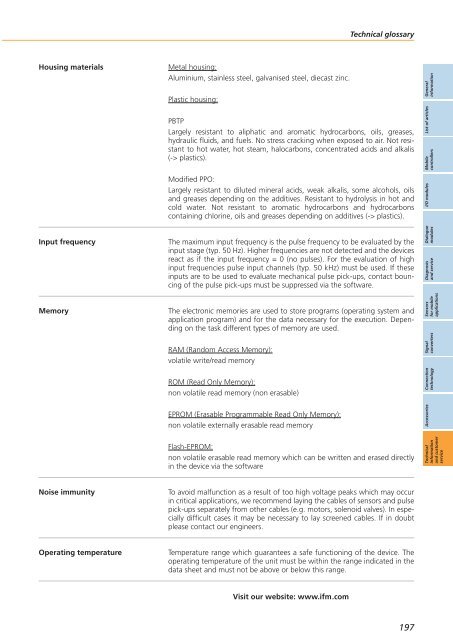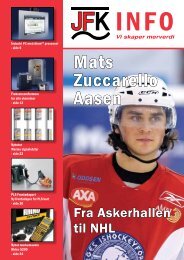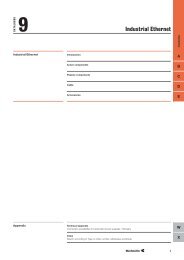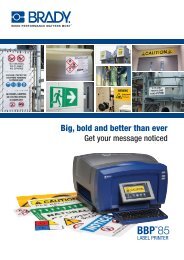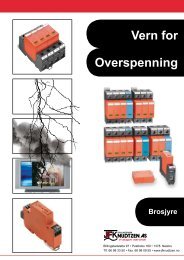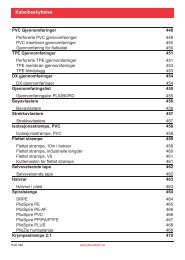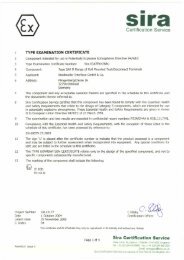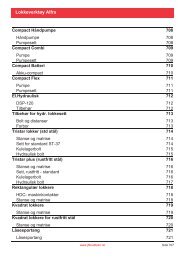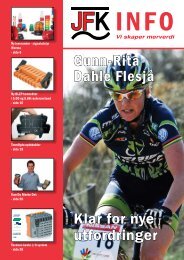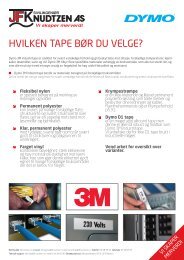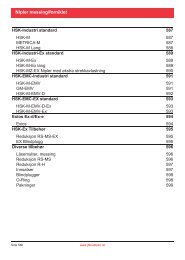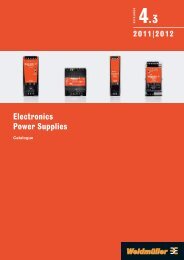Inclination sensors
Inclination sensors
Inclination sensors
- No tags were found...
Create successful ePaper yourself
Turn your PDF publications into a flip-book with our unique Google optimized e-Paper software.
Technical glossaryHousing materialsInput frequencyMemoryMetal housing:Aluminium, stainless steel, galvanised steel, diecast zinc.Plastic housing:PBTPLargely resistant to aliphatic and aromatic hydrocarbons, oils, greases,hydraulic fluids, and fuels. No stress cracking when exposed to air. Not resistantto hot water, hot steam, halocarbons, concentrated acids and alkalis(-> plastics).Modified PPO:Largely resistant to diluted mineral acids, weak alkalis, some alcohols, oilsand greases depending on the additives. Resistant to hydrolysis in hot andcold water. Not resistant to aromatic hydrocarbons and hydrocarbonscontaining chlorine, oils and greases depending on additives (-> plastics).The maximum input frequency is the pulse frequency to be evaluated by theinput stage (typ. 50 Hz). Higher frequencies are not detected and the devicesreact as if the input frequency = 0 (no pulses). For the evaluation of highinput frequencies pulse input channels (typ. 50 kHz) must be used. If theseinputs are to be used to evaluate mechanical pulse pick-ups, contact bouncingof the pulse pick-ups must be suppressed via the software.The electronic memories are used to store programs (operating system andapplication program) and for the data necessary for the execution. Dependingon the task different types of memory are used.RAM (Random Access Memory):volatile write/read memoryROM (Read Only Memory):non volatile read memory (non erasable)EPROM (Erasable Programmable Read Only Memory):non volatile externally erasable read memoryGeneralinformationList of articlesMobilecontrollersI/O modulesDialoguemodulesDiagnosisand serviceSensorsfor mobileapplicationsSignalconvertersConnectiontechnologyAccessoriesFlash-EPROM:non volatile erasable read memory which can be written and erased directlyin the device via the softwareTechnicalinformationand customerserviceNoise immunityTo avoid malfunction as a result of too high voltage peaks which may occurin critical applications, we recommend laying the cables of <strong>sensors</strong> and pulsepick-ups separately from other cables (e.g. motors, solenoid valves). In especiallydifficult cases it may be necessary to lay screened cables. If in doubtplease contact our engineers.Operating temperatureTemperature range which guarantees a safe functioning of the device. Theoperating temperature of the unit must be within the range indicated in thedata sheet and must not be above or below this range.Visit our website: www.ifm.com197


